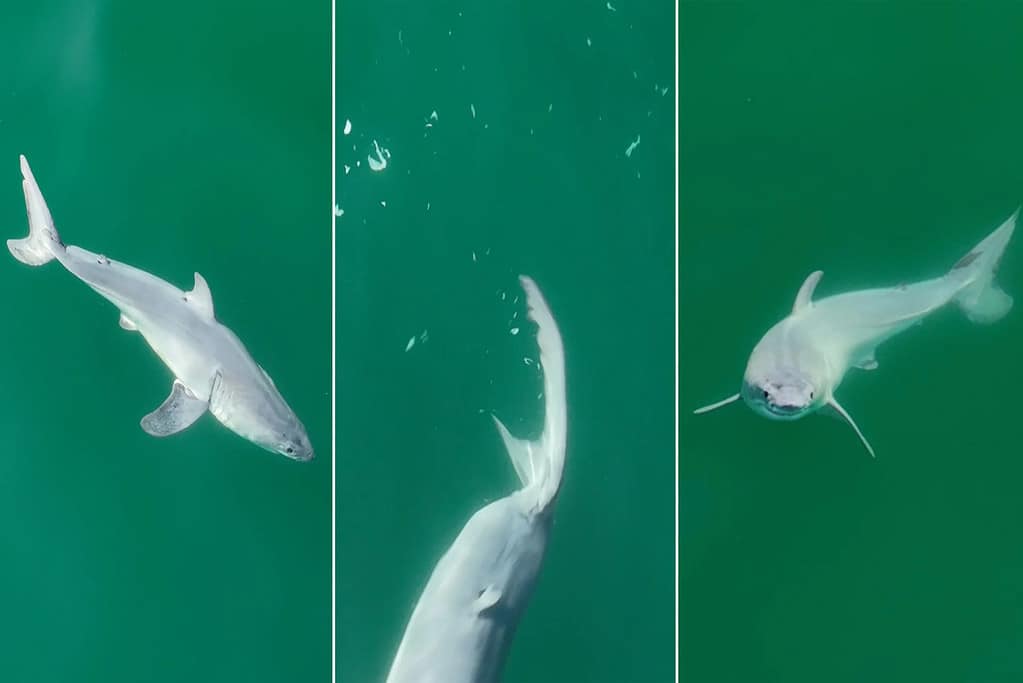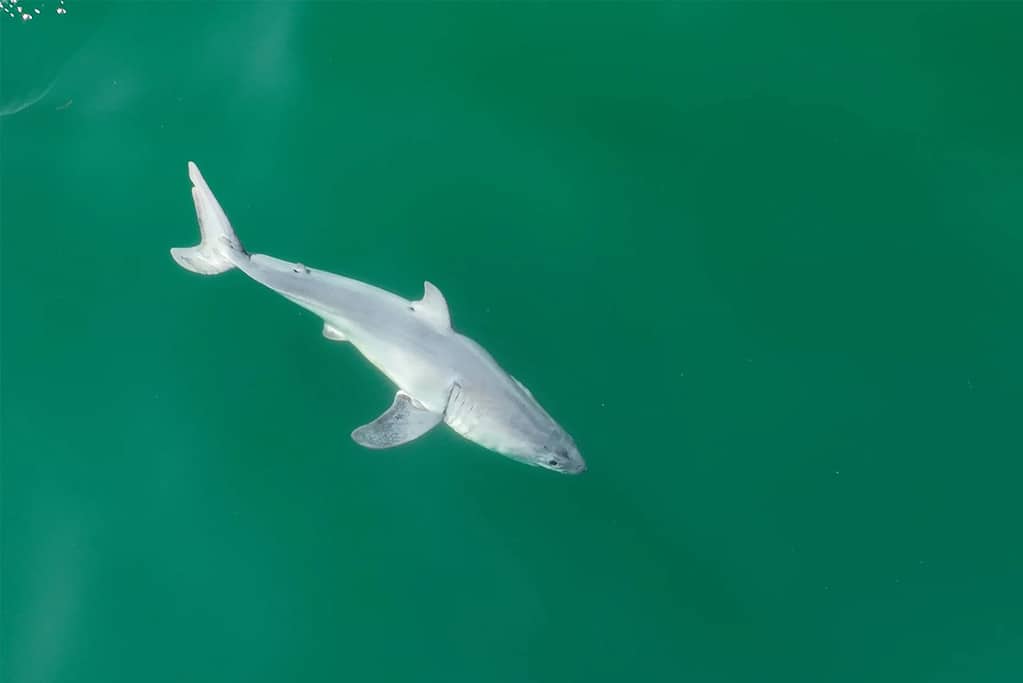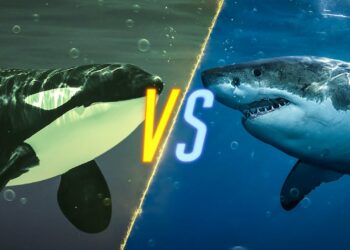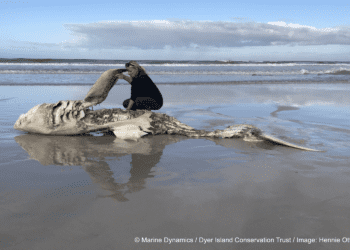Great white sharks have been around for millions of years, but until now, humans have only seen adult great whites, and newborns were a mystery.

For the first time, a team including a wildlife filmmaker and researchers from the University of California (UC), Riverside recorded a newborn white shark on camera near Santa Barbara on California’s coast. This baby shark was five feet long and had pure-white skin.
According to the researchers, this rare sighting could reveal valuable insight about great whites’ early life and habitat.
“Where white sharks give birth is one of the holy grails of shark science. No one has ever been able to pinpoint where they are born, nor has anyone seen a newborn baby shark alive. There have been dead white sharks found inside deceased pregnant mothers. But nothing like this,” Carlos Gauna, the filmmaker who captured the shark footage, said.
What does a newborn great white look like?
An adult great white shark’s body is grey in color, with only its underside being white. However, the researchers spotted an almost “albino-looking” pup that was shedding a white film from its body, possibly an embryonic layer.
“We enlarged the images, put them in slow motion, and realized the white layer was being shed from the body as it was swimming. I believe it was a newborn white shark shedding its embryonic layer,” Phillip Sternes, one of the researchers and a doctoral student at UC, Riverside, said.
Gauna had previously filmed three pregnant great white sharks near the Carpinteria coastline in Santa Barbara. It is possible that the baby shark was born from one of those sharks. Sternes suggests that the newborn was either a day old or born the same day it was filmed.
These findings also support the hypothesis about the central coast of California being one of the pup delivery locations of great whites.
“There are a lot of hypothetical areas, but despite intense interest in these sharks, no one’s seen a birth or a newborn pup in the wild. This may well be the first evidence we have of a pup in the wild, making this a definitive birthing location,” Sternes added.
But it still may not be a great white pup
While many hints suggest that what the researchers filmed was a baby white shark, the findings are still speculative. For instance, it is possible that the shark had its distinctive white skin color due to an unknown skin condition.

“If that is what we saw, then that too is monumental because no such condition has ever been reported for these sharks,” Gauna claimed.
Also, great whites generally give birth to not one but multiple offspring (eight to 10 pups), according to shark experts. So, if the observed shark was a recently born pup why didn’t the researchers didn’t find any other babies?
Aware of these facts, the UC, Riverside researchers also agree that what they found could be just one piece of evidence regarding great white pups, and therefore more research is required to validate their findings.
“Further research is needed to confirm these waters are indeed a great white breeding ground. But if it does, we would want lawmakers to step in and protect these waters to help white sharks keep thriving,” Sternes notes.
The study is published in the journal Environmental Biology of Fishes.






